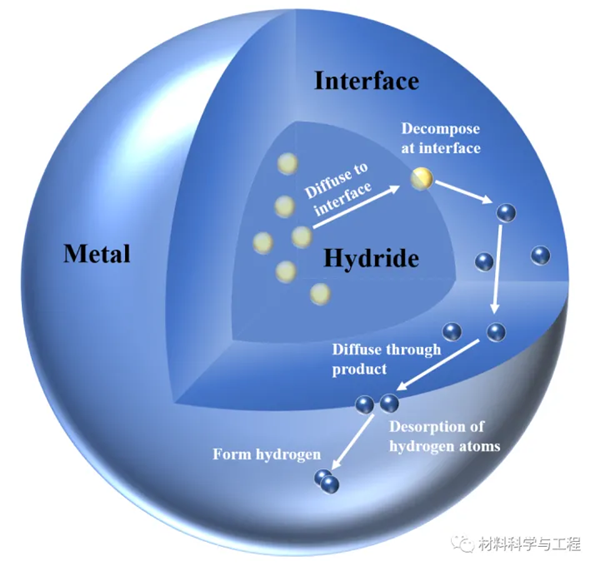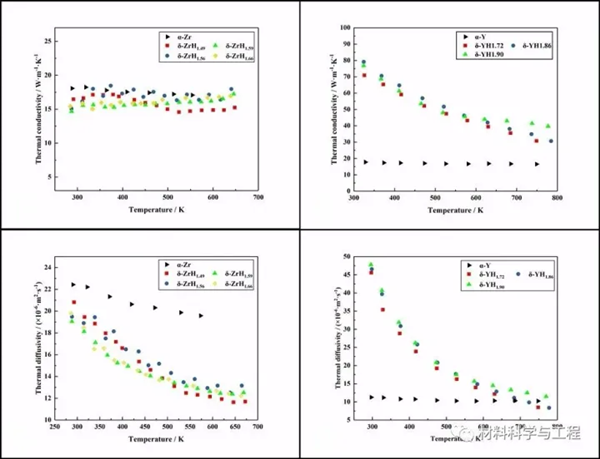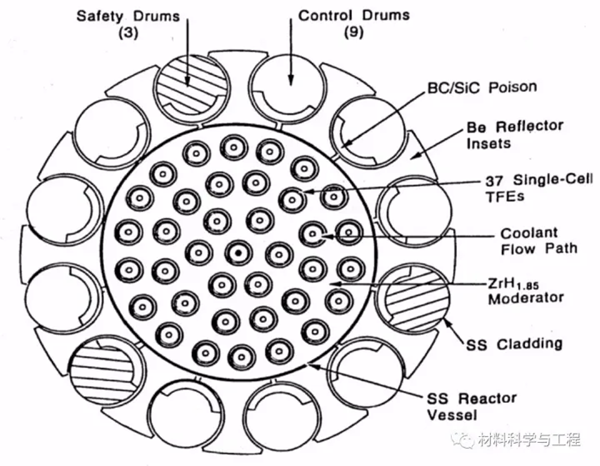Zirconium hydride and yttrium hydride -- moderator materials for space nuclear reactors
Moderator, also known as neutron moderator. In order to make the nuclear fission reaction can be carried out effectively, a kind of material is added into the reactor to slow down the neutron movement speed. Common moderators include light water, heavy water, graphite, metal hydride, etc. For space nuclear power, the operating temperature is high and the moderator volume is required to be as small as possible. Therefore, water, graphite and other moderators are no longer applicable. Metal hydride is often selected as the moderator material for space nuclear reactors. At present, zirconium hydride and yttrium hydride have become ideal moderators in the power supply of space nuclear reactors that have been built and are being developed. In this review, the selection of zirconium hydride and yttrium hydride, existing problems, research status of main properties and application at home and abroad are introduced in detail.
1. In this paper, the main performance indexes of several moderator materials including water, graphite and metal hydride are compared. According to the principle of the highest hydrogen concentration, the smallest neutron absorption cross section, the strongest moderating ability and the smallest volume, the most suitable two materials - zirconium hydride and yttrium hydride were selected.
Table 1 Effect of moderator material properties on

2. The main problems in the application and preparation of these two metal hydrides are hydrogen loss and hydrogen cracking. The process of hydrogen loss is shown in Figure 1. According to the process principle of hydrogen loss, two main methods to prevent hydrogen loss are summarized: improving the thermal stability of hydride and preparing hydrogen barrier coating; Compared with hydrogen loss, the principle of hydrogen cracking is more complex, but according to research reports at home and abroad, the main means of inhibiting hydrogen cracking are more uniform, which are mainly to slow down the rate of hydrogen absorption.

Fig. 1 Schematic diagram of dehydrogenation process of metal hydride
2. Performance research and summary The application of materials can not be separated from the research of basic properties. The behavior of applying materials without basic performance research is hooliganism. In the third chapter of this review, the data of the basic performance research of zirconium hydride and yttrium hydride at home and abroad are summarized in detail, including the summary of the research status of the binary phase diagram of zirconium hydride and yttrium hydride, the summary of the lattice structure and lattice parameter change rules, the relationship curve between thermal diffusion coefficient and hydrogen content, and the relationship curve between thermal conductivity and hydrogen content. The specific data will not be described here. Interested partners can refer to the original text. However, at the end of this chapter, the review author made an interesting discovery: from Figure 2, it can be seen that the thermal conductivity and thermal diffusion coefficient of yttrium hydride decrease with the increase of temperature and are higher than pure metal, which is contrary to the change rule of metal hydrides such as zirconium hydride, titanium hydride and hafnium hydride. The reason for this phenomenon has not been explained in detail, but it does not affect the application of zirconium hydride and yttrium hydride.
Fig. 2 Thermal conductivity and thermal diffusion coefficient of zirconium hydride and yttrium hydride change with temperature
4. The fourth chapter of this review summarizes the application and design of zirconium hydride and yttrium hydride as moderator materials for space nuclear reactors. Since the 1960s, the former Soviet Union has carried out research on TOPAZ series space nuclear reactor power supply. Both TOPAZ-I and TOPAZ-II use honeycomb block zirconium hydride as moderator material. The core structure diagram of TOPAZ-II is shown in Figure 3. There are 37 holes in the pancake ZrH1.85 for inserting fuel elements (TFE), and the outer 12 cylinders are control drums and safety drums. In the six ground tests of TOPAZ-II, the longest duration is 14000h (583 days), of which three tests were suspended due to fuel element problems, two tests were suspended due to NaK coolant leakage, and one was suspended due to hydrogen loss of moderator ZrH1.85. In addition to the former Soviet Union, the design of zirconium hydride (ZrH1.7) moderator was also adopted in the French ERATO plan.
Table 2 TOPAZ-II series test

Compared with zirconium hydride, the main advantage of yttrium hydride is that it has lower decomposition pressure at high temperature and is suitable for high-power long-life reactor. However, yttrium hydride as moderator of high-temperature reactor is still at the stage of technical demonstration and lacks practical experience. In 1991, the United States adopted the design of yttrium hydride (YH1.8) moderator in the SPACE-R space nuclear reactor, with a design life of 10 years, which is much higher than the reactor type of zirconium hydride moderator. It is worth noting that in the research report of Oak Ridge Laboratory (ORNL) in the United States in 2020, ORNL has completed the preparation of yttrium hydride in various shapes, and its application target is directly to space nuclear reactors!

Figure 3 Schematic diagram of TOPAZ-II core structure
Conclusion: In recent years, the research on space nuclear power in various countries in the world has entered a vigorous stage again, and the application and research and development of many materials need to be paid more attention to by people of materials. As mentioned in the conclusion of the book "Space Nuclear Power", "it is precisely that the spring and autumn are orderly, and the people are not at the disadvantage of time; the universe is infinite, and the great cause is yet to be achieved." (Text: Wang Shun)
This article is from the WeChat official account "Materials Science and Engineering".

